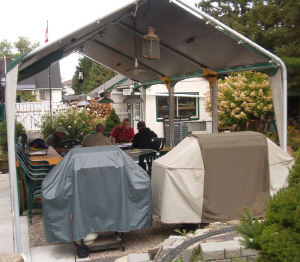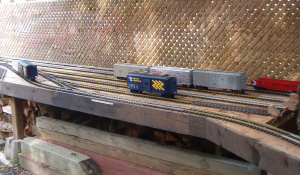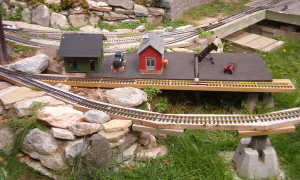The Ironwood, Peter’s Pond and Western (IPP&W) Railway is home to the Ottawa Valley Garden Railway Society.
The tour begins on the eastern end of the railway at the Craig Leigh Passenger Station.
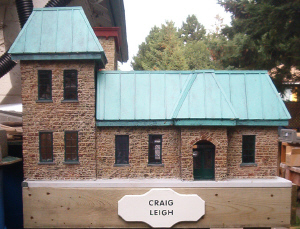
This is the rear of the station showing the passenger platforms and baggage handling area.
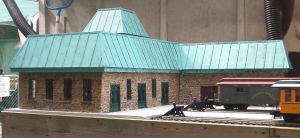
By looking over the roof of the station we can see Doug and a guest engineer assembling the morning’s first passenger train in the yard.
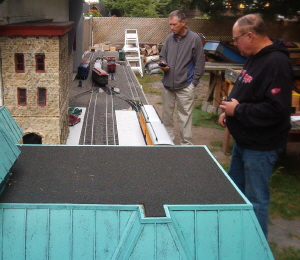
The rear of the Dominion Post Office building, headquarters of the IPP&W. Just visible over the passenger cars are the arches of the covered mail handling area.
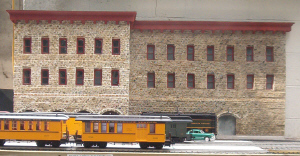
The factory and warehouse of Scobie’s Foods is one of the oldest buildings in Craig Leigh.
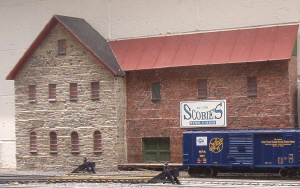
Brunt’s Milling and Malting are distillers of fine Canadian whiskey.
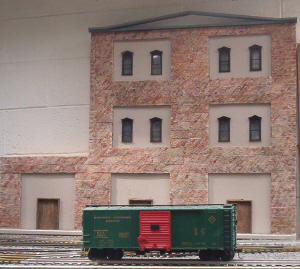
We take a last look back at the passenger yard.
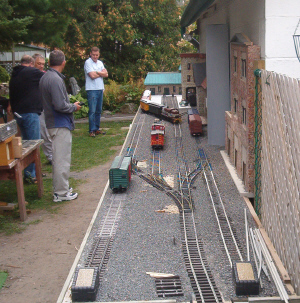
The following are photos of the Douglas Freight Yard in Craig Leigh.
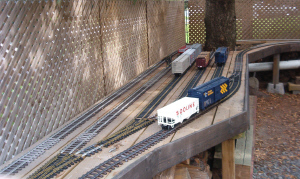
This is the wye leading to the engine service facilities at Craig Leigh.
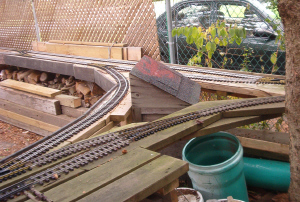
The engine service facilities is proposed site for a three track, double depth engine house. Note the shortened track on the right.
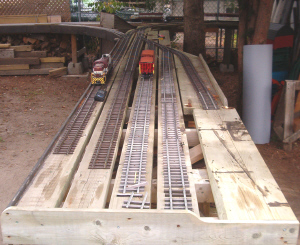
This is the interchange track for off line locomotives. Note the end of track devices.
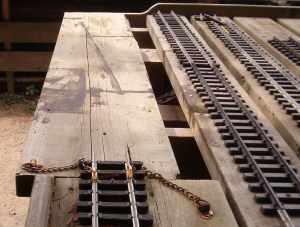
Shown is an RS-3 in a light, intermodal container. The Plexiglas end panel, shown at the right end of the carrier, lifts out to allow battery powered locomotives to drive out onto the interchange track. A similar facility is found at the other end of the railway.
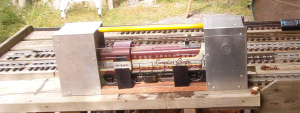
First stop on the Eastern Division is Mount St. Helens.
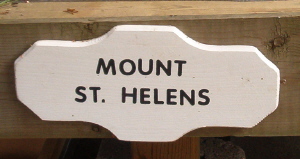
The newly constructed freight yard added to the siding.
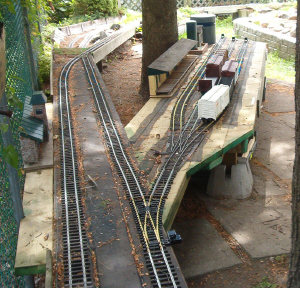
The Mount St. Helens Passenger Station out on the mainline.
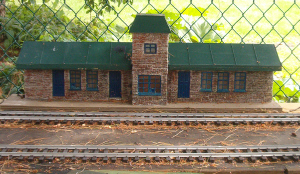
Valley Fuels at the end the freight yard.
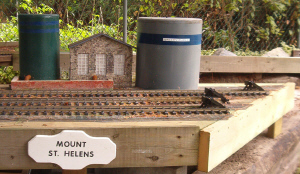
Mount St. Helens also serves MacKenzie Lumber and Eastern Ontario Packers.
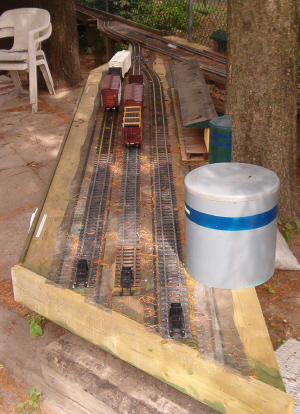
Down the line is Ironwood Junction. Once a thriving community, it has fallen on hard times. The official railway photographer was embarrassed to take a front view of the now dilapidated passenger station.
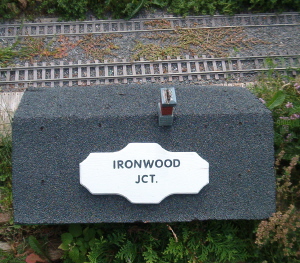
Ironwood’s overgrown siding, passenger station and patchwork retaining walls.
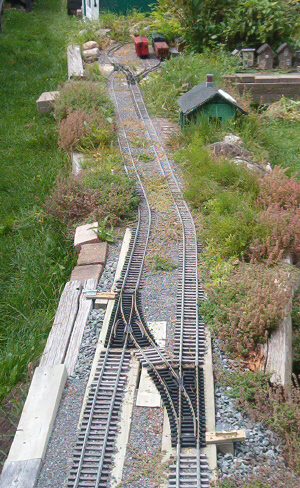
Abbreviated team tracks and a humble freight shed made from an obsolete boxcar speak volumes about the down turn in Ironwood’s economy. After the original wooden platform under the freight shed has deteriorated, a new concrete platform was poured. There are more photos of the freight shed in the Photos Section under Buildings.
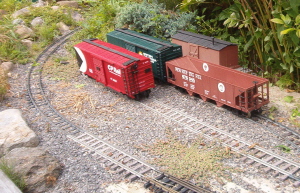
We are leaving Ironwood Junction behind us.
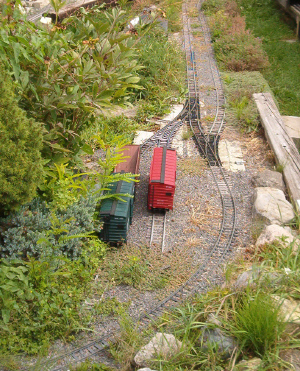
Down the line is the thriving community of Spruce.
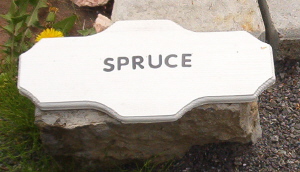
Unlike Ironwood Junction, the community of Spruce has received a complete makeover with new sidings and freight spurs.
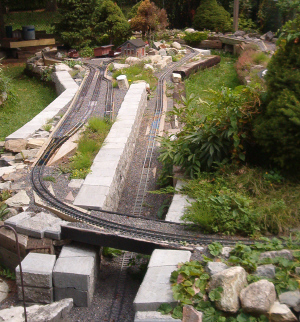
The MacKenzie Lumber’s refurbished shed and the new stone Freight Depot attest to the recent upswing in the economy of Spruce. The IPP&W’s frugal flag stop, an old bobber caboose, provides a temporary dry and heated shelter for passengers.
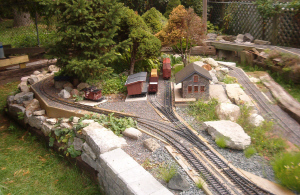
Here is another view of the fine stone freight depot. More photos of MacKenzie Lumber’s refurbished lumber shed can be found in the Photos Section under Buildings.
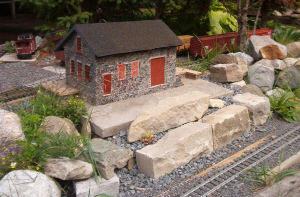
This is an aerial shot of the mainline siding and spur at Spruce.
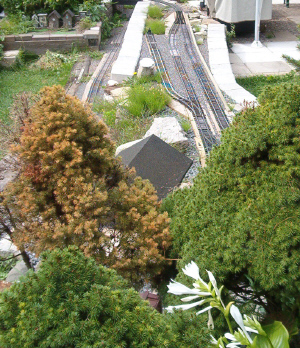
This is a view of the newly widened curve and retaining wall at the far end of Spruce.
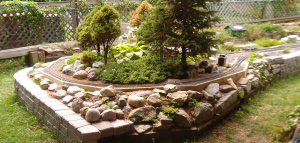
The new track work and retaining wall on the hill behind Spruce. The grade here forced the removal of an old siding.
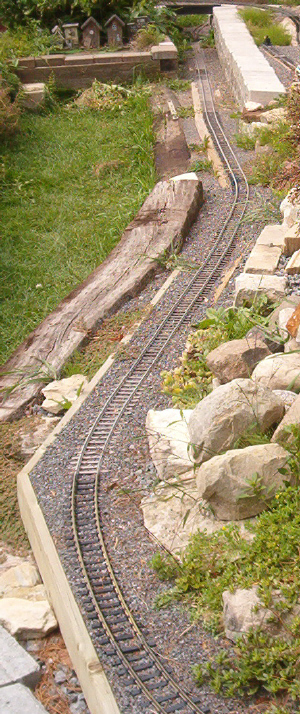
After a tunnel was excavated, a new ballasted girder bridge and stone retaining wall were constructed at the bottom of the hill.
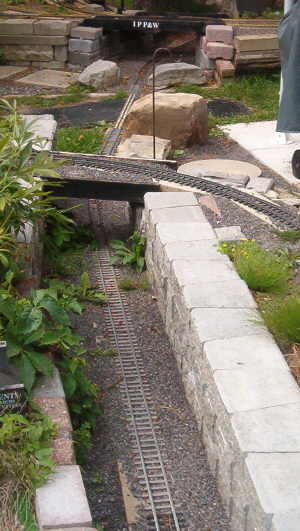
The track down the line from the hill crosses under two new, through girder bridges which were built after a second tunnel was excavated near Glen Hammond.
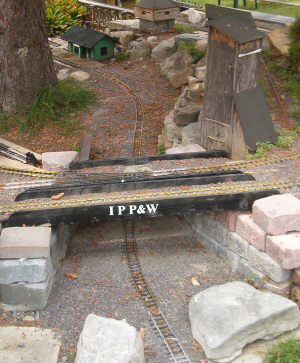
After crossing a new, steel deck girder bridge, we look back at an old burnt out wooden trestle on the left.
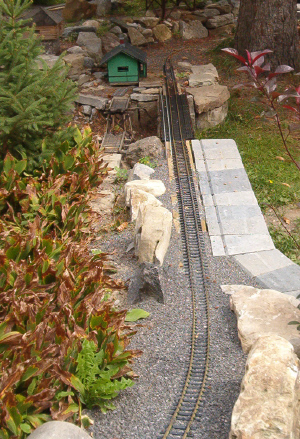
A view across the dry wash next to Lily, showing the new deck girder bridge in the foreground, the burnt out wooden trestle behind it, the remaining wooden trestle and a new steel through truss bridge with the realigned mainline.
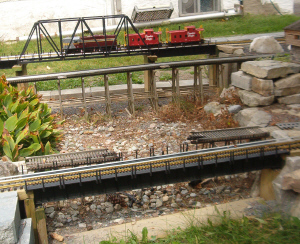
Another of the IPP&W’s frugal flag stops is all that remains at Lily.
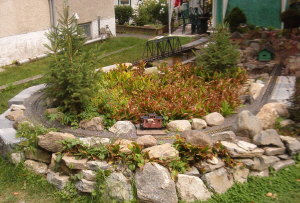
A view of the new stone retaining wall, widened curve, realigned mainline and steel truss bridge between Lily and the Blue Mountain Mine.
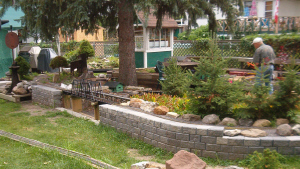
After hearing rumours about an American invasion, the frightened residents of Glen Hammond built this block house. Railway Management convinced the residents that they were better to stock it with beer than powder and shot. To read about the Annual American Invasion of Ottawa, see the Events Section of the web site.
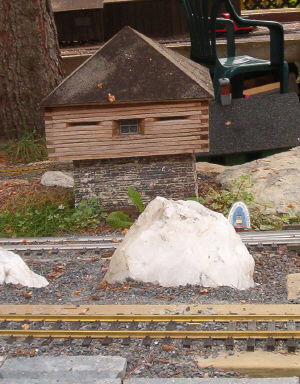 < The Blue Mountain Mine spur off the old mainline from Lily to Glen Hammond. The old mainline is now the eastern lead to the Nelson Freight Yard. The green and white building beyond the mine is the IPP&W’s Dispatcher’s Control Center. IPP&W crews radio the Dispatcher for clearance from point to point on the railway. His responsibilities are to control and expedite the movements of all trains on the railway, with preference given to passenger service, while preventing bottlenecks and corn field meets.
< The Blue Mountain Mine spur off the old mainline from Lily to Glen Hammond. The old mainline is now the eastern lead to the Nelson Freight Yard. The green and white building beyond the mine is the IPP&W’s Dispatcher’s Control Center. IPP&W crews radio the Dispatcher for clearance from point to point on the railway. His responsibilities are to control and expedite the movements of all trains on the railway, with preference given to passenger service, while preventing bottlenecks and corn field meets.
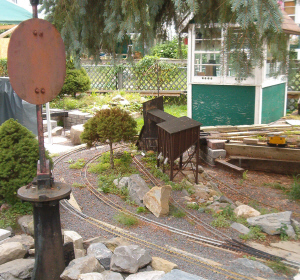
Glen Hammond is the division point between the Eastern and Western Divisions of the IPP&W.
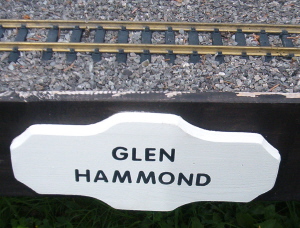
The old Glen Hammond freight yard was always a bottleneck on the IPP&W. To overcome this problem, a bypass with a long passing siding was built around the old yard.
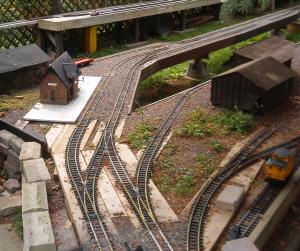
A view of the new, brick passenger station with the MacKenzie Lumber freight shed behind it.
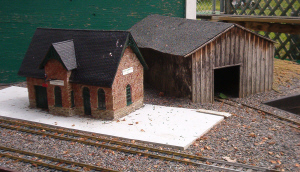
We are looking back at the top of the bypass showing the MacKenzie Lumber spur, passenger station track, mainline and siding.
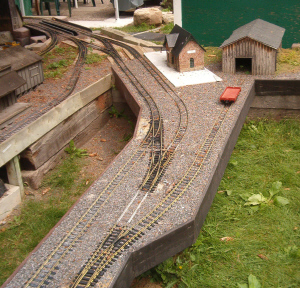
This is a last look back at the Glen Hammond bypass.
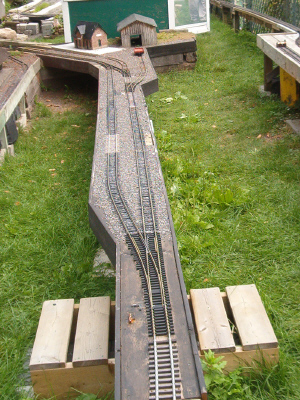
The former Glen Hammond Yard has been renamed the Nelson Yard by the IPP&W’s new branch line partners the Mattawa and Rat Portage (RP&M) Railway. The RP&M is now responsible for all activities within the Nelson Yard.
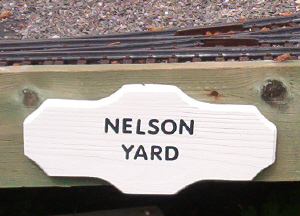
Switches have been added between the IPP&W mainline and the eastern lead to Nelson Yard. This will allow westbound IPP&W freight trains terminating in Nelson Yard direct access to the yard.
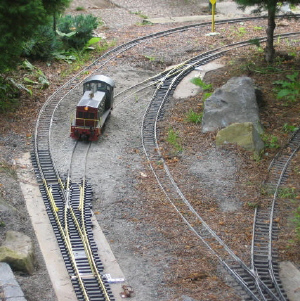
As the realigned mainline of the IPP&W bypasses the Blue Mountain Mine spur, service to and from the mine is now provided by the RP&M through interchange with the IPP&W. The eastern leads for Nelson Yard pass over the girder bridges beside the Blue Mountain Mine.
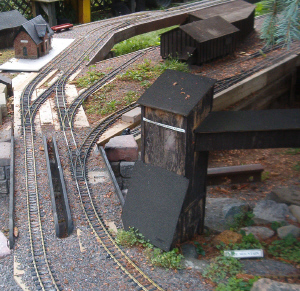
RP&M President, Gord Bellamy, hard at work in the Nelson Yard.
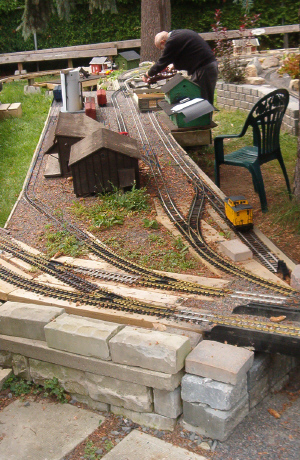
The old wooden freight sheds at the eastern entrance to the yard.
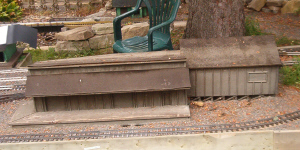
This is the fuel oil storage tank in the engine service facility.
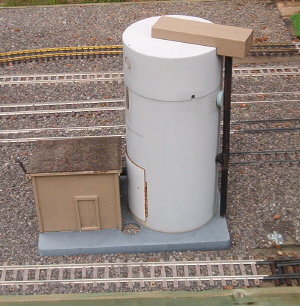
The Dave Goodson Memorial Turntable in the engine service area. Rumours of The Old Curmudgeon’s (TOC) passing are greatly exaggerated.
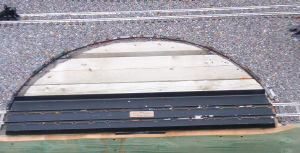
We take a last look back at the Nelson Yard.
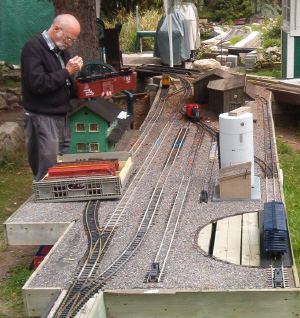
Larabie Fuels is situated between Glen Hammond and Bellamy.
Bellamy has the distinction of being serviced by both railways; the IPP&W for passenger service and the RP&M for freight service.
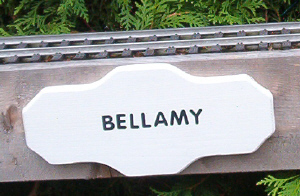
A view of the southern end of Bellamy. The line in the foreground is the western lead of Nelson Yard. The IPP&W’s mainline passes out of view around Larabie Fuels at the bottom left and in front of the Bellamy Passenger Station.
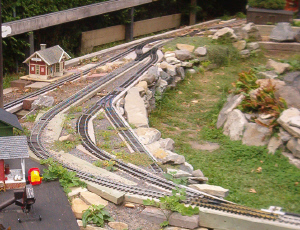
The northern end of Bellamy crossing over the diamond to the two spurs at Rat Portage. The IPP&W mainline curves through the diamond and heads east towards Peter’s Pond. Traffic through the diamond is controlled by the Dispatcher with priority given to IPP&W trains.
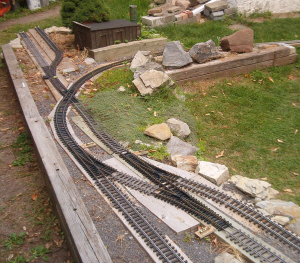
This is a view of the diamond and Bellamy from Rat Portage.

This is the serene and very green Peter’s Pond, home of the invisible gold fish.
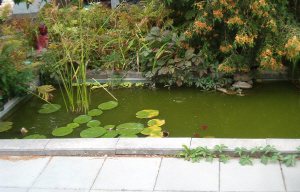
One of the railway’s namesakes, Peter’s Pond is a quiet community in the woods best known for its fishing.
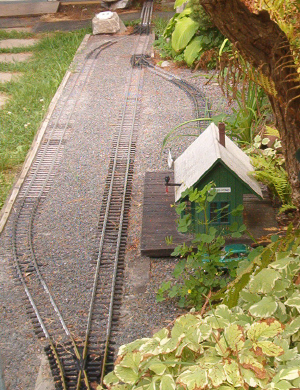
Even the Station Agent’s car appears to match this deep woods setting.
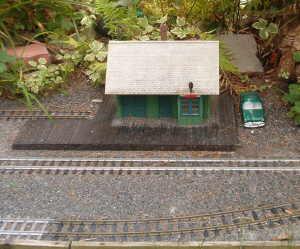
We take a final look back at Peter’s Pond as the long, long climb to Bell begins.
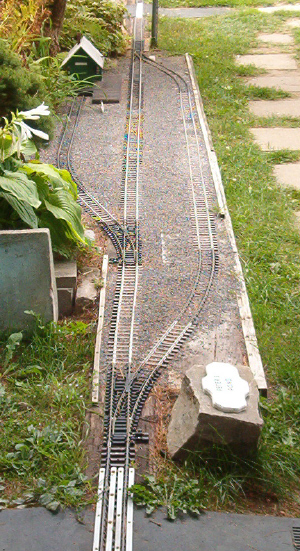
This is one of the railway’s most remote communities.
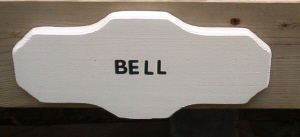
This is the last half of the long, long climb to Bell.
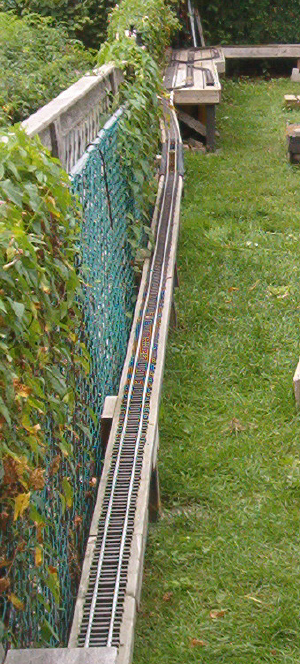
This is the yard at Bell. It is not exactly bustling with activity, but an area of expected promise.

There is definitely room for industry here.
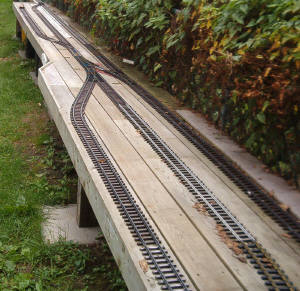
On the bottom is the interchange track with the Algonquin Railway serviced through the yard at Bell. The IPP&W mainline passes above it heading towards Firgrove Yard.
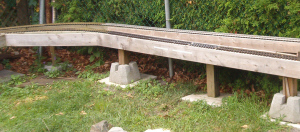
This is Firgrove Yard, the Northwestern end of the IPP&W.
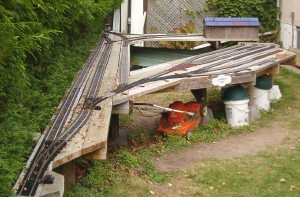
The Fir Grove freight yard has several team tracks to service local industries and an interchange track for the Lake Nipissing Railway.
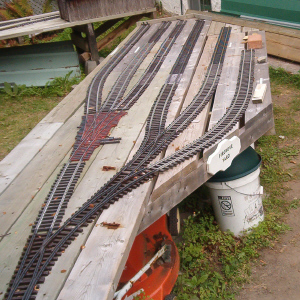
Firgrove Freight Yard is ordinarily a very busy spot.
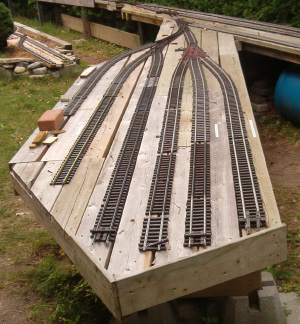
A view of the wye at Firgrove Yard which is the end of the line.
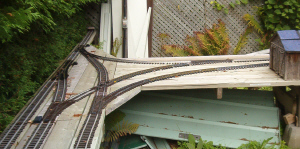
Here are the crews’ quarters with Doug enjoying a Diet Coke and Bud a Stella.
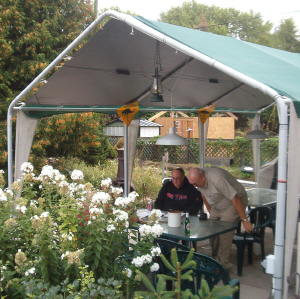
Bud and Ralph are taking advantage of the fridge in the crews’ quarters.
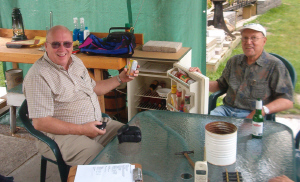
This is a comfortable place during the operating season with two BBQs to grill lunch for the hungry crews.
